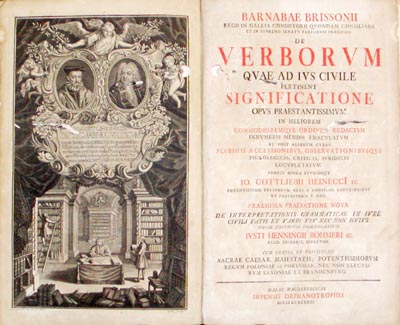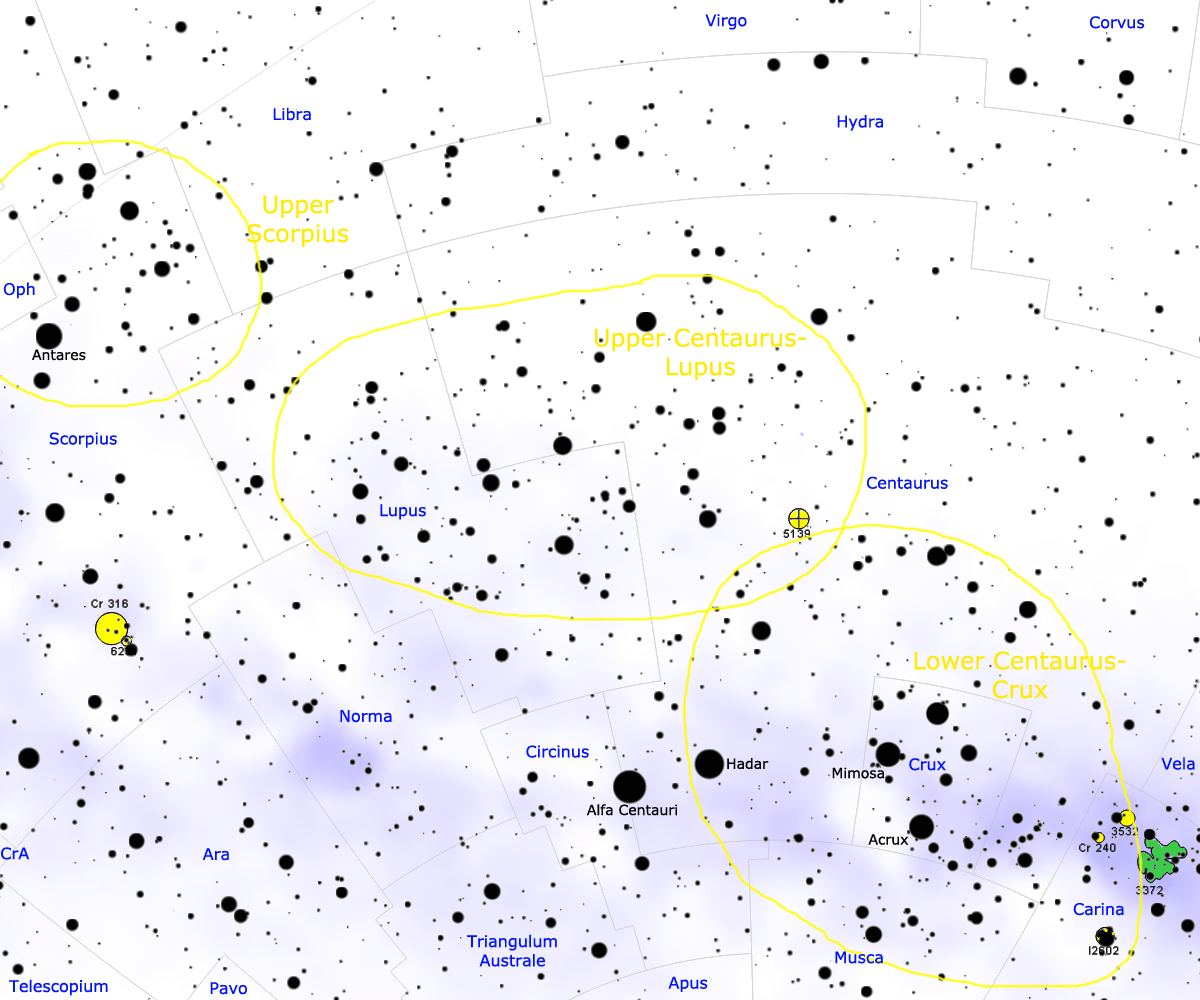|
Tau Scorpii
Tau Scorpii, Latinized from τ Scorpii, formally known as Paikauhale , is a star in the southern zodiac constellation of Scorpius. The apparent visual magnitude of Tau Scorpii is +2.8, while parallax measurements yield a distance estimate of roughly 470 light-years (150 parsecs) from Earth. Description Compared to the Sun, Tau Scorpii is a massive OB star with 15 times the Sun's mass and more than six times the radius of the Sun. It is radiating about 20,400 times the Sun's luminosity from its outer envelope at an effective temperature of 31,440 K. This gives it the blue-white hue characteristic of B-type stars. As yet there is no evidence of a companion in orbit around τ Sco. It is a magnetic star whose surface magnetic field was mapped by means of Zeeman–Doppler imaging. Tau Scorpii is rotating relatively slowly with a period of 41 days. The spectrum of this star shows triply ionized oxygen (O IV) that is being generated by X-rays and ... [...More Info...] [...Related Items...] OR: [Wikipedia] [Google] [Baidu] |
Scorpius (constellation)
Scorpius is a zodiac constellation located in the Southern celestial hemisphere, where it sits near the center of the Milky Way, between Libra to the west and Sagittarius to the east. Scorpius is an ancient constellation that pre-dates the Greeks; it is one of the 48 constellations identified by the Greek astronomer Ptolemy in the second century. Its old astronomical symbol is (♏︎). Notable features Stars Scorpius contains many bright stars, including Antares (α Sco), "rival of Mars," so named because of its distinct reddish hue; β1 Sco (Graffias or Acrab), a triple star; δ Sco (Dschubba, "the forehead"); θ Sco ( Sargas, of unknown origin); ν Sco (Jabbah); ξ Sco; π Sco (Fang); σ Sco (Alniyat); and τ Sco (Paikauhale). Marking the tip of the scorpion's curved tail are λ Sco ( Shaula) and υ Sco (Lesath), whose names both mean "sting." Given their proximity to one another, λ Sco and υ Sco are sometimes referred to as the Cat's Eyes. The constella ... [...More Info...] [...Related Items...] OR: [Wikipedia] [Google] [Baidu] |
Stellar Classification
In astronomy, stellar classification is the classification of stars based on their spectral characteristics. Electromagnetic radiation from the star is analyzed by splitting it with a prism or diffraction grating into a spectrum exhibiting the rainbow of colors interspersed with spectral lines. Each line indicates a particular chemical element or molecule, with the line strength indicating the abundance of that element. The strengths of the different spectral lines vary mainly due to the temperature of the photosphere, although in some cases there are true abundance differences. The ''spectral class'' of a star is a short code primarily summarizing the ionization state, giving an objective measure of the photosphere's temperature. Most stars are currently classified under the Morgan–Keenan (MK) system using the letters ''O'', ''B'', ''A'', ''F'', ''G'', ''K'', and ''M'', a sequence from the hottest (''O'' type) to the coolest (''M'' type). Each letter class is then subdivi ... [...More Info...] [...Related Items...] OR: [Wikipedia] [Google] [Baidu] |
Latinisation Of Names
Latinisation (or Latinization) of names, also known as onomastic Latinisation, is the practice of rendering a ''non''-Latin name in a Latin style. It is commonly found with historical proper names, including personal names and toponyms, and in the standard binomial nomenclature of the life sciences. It goes further than romanisation, which is the transliteration of a word to the Latin alphabet from another script (e.g. Cyrillic). For authors writing in Latin, this change allows the name to function grammatically in a sentence through declension. In a scientific context, the main purpose of Latinisation may be to produce a name which is internationally consistent. Latinisation may be carried out by: * transforming the name into Latin sounds (e.g. for ), or * adding Latinate suffixes to the end of a name (e.g. for '' Meibom),'' or * translating a name with a specific meaning into Latin (e.g. for Italian ; both mean 'hunter'), or * choosing a new name based on some attri ... [...More Info...] [...Related Items...] OR: [Wikipedia] [Google] [Baidu] |
Luminosity
Luminosity is an absolute measure of radiated electromagnetic power (light), the radiant power emitted by a light-emitting object over time. In astronomy, luminosity is the total amount of electromagnetic energy emitted per unit of time by a star, galaxy, or other astronomical object. In SI units, luminosity is measured in joules per second, or watts. In astronomy, values for luminosity are often given in the terms of the luminosity of the Sun, ''L''⊙. Luminosity can also be given in terms of the astronomical magnitude system: the absolute bolometric magnitude (''M''bol) of an object is a logarithmic measure of its total energy emission rate, while absolute magnitude is a logarithmic measure of the luminosity within some specific wavelength range or filter band. In contrast, the term ''brightness'' in astronomy is generally used to refer to an object's apparent brightness: that is, how bright an object appears to an observer. Apparent brightness depends on both the l ... [...More Info...] [...Related Items...] OR: [Wikipedia] [Google] [Baidu] |
HR Diagram
HR, Hr or hr may refer to: Arts and media Film and television * ''H.R. Pufnstuf'', a children's television series from 1969 * ''HR'', a 2013 television drama starring Alicia Silverstone * HR, a criminal organisation in the American TV series ''Person of Interest'' Other media * HR (girl group), Japan * Hessischer Rundfunk (Hessian Broadcasting), Germany * ''Homestar Runner'', an Internet cartoon * HyperRogue, a roguelike video game Fictional characters * H. R. Wells, a character from ''The Flash'' television series Business and finance * Human resources, personnel * Human resource management * Ukrainian hryvnia, currency Government and politics * Human rights * High Representative of the Union for Foreign Affairs and Security Policy of the European Union * United States House of Representatives Languages * hr (ISO 639-1 code) for the Croatian language * , a two-letter combination used in some languages ** Reduction of /hr/ to /r/ in Old/Middle English People * H.R. ( ... [...More Info...] [...Related Items...] OR: [Wikipedia] [Google] [Baidu] |
Stellar Association
A stellar association is a very loose star cluster, looser than both open clusters and globular clusters. Stellar associations will normally contain from 10 to 100 or more stars. The stars share a common origin, but have become gravitationally unbound and are still moving together through space. Associations are primarily identified by their common movement vectors and ages. Identification by chemical composition is also used to factor in association memberships. Stellar associations were first discovered by the Soviet Armenian astronomer Victor Ambartsumian in 1947. The conventional name for an association uses the names or abbreviations of the constellation (or constellations) in which they are located; the association type, and, sometimes, a numerical identifier. Types Victor Ambartsumian first categorized stellar associations into two groups, OB and T, based on the properties of their stars. A third category, R, was later suggested by Sidney van den Bergh for associations ... [...More Info...] [...Related Items...] OR: [Wikipedia] [Google] [Baidu] |
Scorpius–Centaurus Association
The Scorpius–Centaurus association (sometimes called Sco–Cen or Sco OB2) is the nearest OB association to the Sun. This stellar association is composed of three subgroups (Upper Scorpius, Upper Centaurus–Lupus, and Lower Centaurus–Crux) and its distance is about 130 parsecs or 420 light-years. Using improved Hipparcos data, Rizzuto and colleagues analysed nearby stars more closely, bringing the number of known members to 436. They doubt the need to add a subclassification because they found a more continuous spread of stars. The Sco–Cen subgroups range in age from 11 million years (Upper Scorpius) to roughly 15 million years (Upper Centaurus–Lupus and Lower Centaurus–Crux). Many of the bright stars in the constellations Scorpius, Lupus, Centaurus, and Crux are members of the Sco–Cen association, including Antares (the most massive member of Upper Scorpius), and most of the stars in the Southern Cross. Hundreds of stars have been identified as members of Sc ... [...More Info...] [...Related Items...] OR: [Wikipedia] [Google] [Baidu] |
Proper Motion
Proper motion is the astrometric measure of the observed changes in the apparent places of stars or other celestial objects in the sky, as seen from the center of mass of the Solar System, compared to the abstract background of the more distant stars. The components for proper motion in the equatorial coordinate system (of a given epoch, often J2000.0) are given in the direction of right ascension (''μ''α) and of declination (''μ''δ). Their combined value is computed as the ''total proper motion'' (''μ''). It has dimensions of angle per time, typically arcseconds per year or milliarcseconds per year. Knowledge of the proper motion, distance, and radial velocity allows calculations of an object's motion from our star system's frame of reference and its motion from the galactic frame of reference – that is motion in respect to the Sun, and by coordinate transformation, that in respect to the Milky Way. Introduction Over the course of centuries, stars appear ... [...More Info...] [...Related Items...] OR: [Wikipedia] [Google] [Baidu] |
XMM-Newton
''XMM-Newton'', also known as the High Throughput X-ray Spectroscopy Mission and the X-ray Multi-Mirror Mission, is an X-ray space observatory launched by the European Space Agency in December 1999 on an Ariane 5 rocket. It is the second cornerstone mission of ESA's Horizon 2000 programme. Named after physicist and astronomer Sir Isaac Newton, the spacecraft is tasked with investigating interstellar X-ray sources, performing narrow- and broad-range spectroscopy, and performing the first simultaneous imaging of objects in both X-ray and optical ( visible and ultraviolet) wavelengths. Initially funded for two years, with a ten-year design life, the spacecraft remains in good health and has received repeated mission extensions, most recently in October 2020 and is scheduled to operate until the end of 2022. ESA plans to succeed ''XMM-Newton'' with the Advanced Telescope for High Energy Astrophysics (ATHENA), the second large mission in the Cosmic Vision 2015–2025 plan, to be laun ... [...More Info...] [...Related Items...] OR: [Wikipedia] [Google] [Baidu] |
Advanced Satellite For Cosmology And Astrophysics
The Advanced Satellite for Cosmology and Astrophysics (ASCA, formerly named ASTRO-D) was the fourth cosmic X-ray astronomy mission by JAXA, and the second for which the United States provided part of the scientific payload. The satellite was successfully launched on 20 February 1993. The first eight months of the ASCA mission were devoted to performance verification. Having established the quality of performance of all ASCA's instruments, the spacecraft provided science observations for the remainder of the mission. In this phase the observing program was open to astronomers based at Japanese and U.S. institutions, as well as those located in member states of the European Space Agency. X-ray astronomy mission ASCA was the first X-ray astronomy mission to combine imaging capability with a broad passband, good spectral resolution, and a large effective area. The mission also was the first satellite to use CCDs for X-ray astronomy. With these properties, the primary scientific pur ... [...More Info...] [...Related Items...] OR: [Wikipedia] [Google] [Baidu] |
ROSAT
ROSAT (short for Röntgensatellit; in German X-rays are called Röntgenstrahlen, in honour of Wilhelm Röntgen) was a German Aerospace Center-led satellite X-ray telescope, with instruments built by West Germany, the United Kingdom and the United States. It was launched on 1 June 1990, on a Delta II rocket from Cape Canaveral, on what was initially designed as an 18-month mission, with provision for up to five years of operation. ROSAT operated for over eight years, finally shutting down on 12 February 1999. In February 2011, it was reported that the satellite was unlikely to burn up entirely while re-entering the Earth's atmosphere due to the large amount of ceramics and glass used in construction. Parts as heavy as could impact the surface. ROSAT eventually re-entry, re-entered the Earth's atmosphere on 23 October 2011 over Bay of Bengal. Overview According to NASA, the Roentgensatellit (ROSAT) was a joint German, U.S. and British X-ray astrophysics project. ROSAT carrie ... [...More Info...] [...Related Items...] OR: [Wikipedia] [Google] [Baidu] |
Auger Electron
The Auger effect or Auger−Meitner effect is a physical phenomenon in which the filling of an inner-shell vacancy of an atom is accompanied by the emission of an electron from the same atom. When a core electron is removed, leaving a vacancy, an electron from a higher energy level may fall into the vacancy, resulting in a release of energy. Although most often this energy is released in the form of an emitted photon, the energy can also be transferred to another electron, which is ejected from the atom; this second ejected electron is called an Auger electron. Effect The effect was first discovered by Lise Meitner in 1922; Pierre Victor Auger independently discovered the effect shortly after and is credited with the discovery in most of the scientific community. Upon ejection, the kinetic energy of the Auger electron corresponds to the difference between the energy of the initial electronic transition into the vacancy and the ionization energy for the electron shell from which ... [...More Info...] [...Related Items...] OR: [Wikipedia] [Google] [Baidu] |



.jpg)


